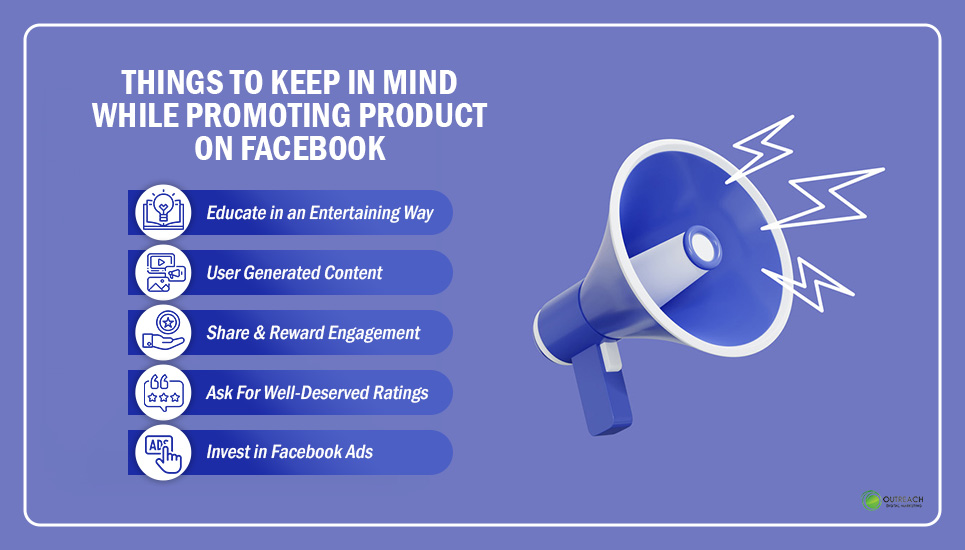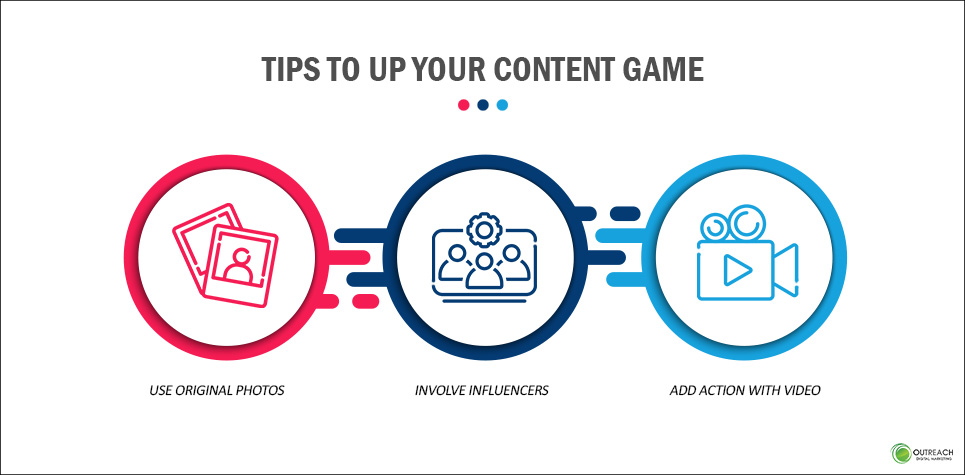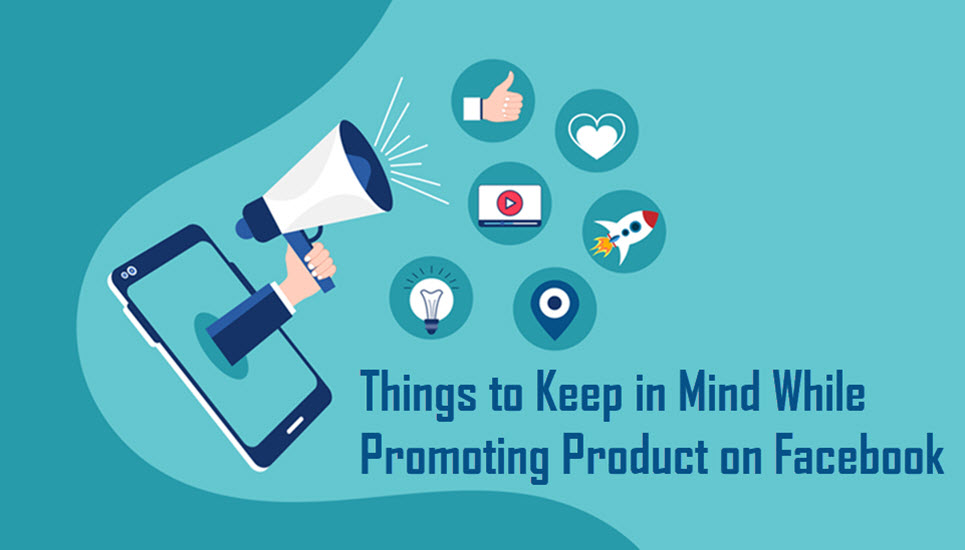Small business owners have more marketing tools at their disposal than ever before. Things like social media make it easier to connect with customers while also promoting your product and services. In fact, digital marketing agencies often include Facebook in their strategies as the ideal channel for their clients’ product promotion. Here we look at the most important things to keep in mind when promoting products on Facebook to reel in those customers.

Educate in an Entertaining Way
Nothing gets rid of customers faster than boredom or lack of information. Education is more important to today’s consumer because they know knowledge is power. They want information now but don’t want to work too hard to understand it. Your Facebook followers want helpful content with high-quality images to understand your products. This is the only way to increase engagement and hopefully boost sales. So, the question is, what assets should you be sharing here? What is the easiest way to provide information in an entertaining way? Although you might worry an image or video isn’t enough, you can make them worthy by getting more creative. How so, you might ask? Here are some ways to up your content game:

Use Original Photos
Stock images are a dime a dozen, and frankly, consumers today can spot them a mile away. The same photos are used over and over again because there aren’t too many good ones available. So, the first step to improving your engagement factor is to use original photos that promote your products. Say no to generic and yes to showing off your product in use. Whether it’s a customer in your best “Top Gun” aviator shades, a before and after shot showing off your latest paint colour, or someone scarfing down your latest ice cream flavor, real-life situations sell. This is also a great way to cross-sell and upsell other items.
Involve Influencers
You’re probably sick to death of the term, but influencers sell. Create share-worthy tutorials explaining how to use your product or showing off your service, so influencers are more likely to like them and share them. You can also take the opposite approach and use influencers’ tips to sell your products. A little name-dropping never hurt anyone, and most influencers love to hear their names mentioned by brands, big and small.
Add Action with Video
Upload video to Facebook instead of only using photos. Things like showing off products with a 360° view, demos, fashion shows, products used in situ, before and after, sped-up projects, etc., all create interest and give a better view of what you offer. And don’t forget about Facebook’s live video feature. You can do something fun like show your team unpacking new arrivals in your store or handing out free samples of coffee at your bistro. You can even interview customers shopping or enjoying food at your establishment. Instructional videos are much more engaging than flat images and also add a face to the brand, so you become more authentic to customers.
User Generated Content
Another favorite tactic for SEO agencies and digital marketing companies, user-generated content or UGC is the best way to promote your products. First, it’s real commentary from actual customers who show how your product has made them happy or resolved an issue. Second, it creates loyalty as it shows customers they are appreciated. Nothing sells products better than satisfied customers. If you feel you don’t have access to UGC, don’t worry. There are a few easy ways to get customers interested:
Contests
Running a Facebook contest is a great way to create a library of UGC. A video or image of customers using or wearing your product as the contest entry where a good giveaway or discount is the prize is sure to see some great submissions. You can make it even more engaging by having followers vote on the best submission.
Create Hashtags
Many small business owners miss out on opportunities because they forget to use hashtags. Every post you publish should include hashtags so customers include them on their own posts. They should also be added to all your digital campaigns and social media marketing. Hashtags also help new customers find your brand. When you post using hashtags, your posts become searchable. Hashtags are marketing 101 and can help you collect all kinds of images and video.
Share & Reward Engagement
Facebook doesn’t allow you to hold contests where likes are required for entry. However, there are other ways to improve engagement. First, you should have some form of reward when you ask followers to share and like your products. This can be something as simple as a special promo code, a discount, or a loyalty program based on points.
Rewards can be offered for things like following you on Facebook to grow your followers, getting likes to attract attention from followers’ friends or inviting your new customers to follow you on Facebook. Encouraging friends to follow you can also come with rewards such as a pal discount where both the follower and friend get the same deal. People love the idea of loyalty points and will happily like, share and engage with your brand more often to collect them.
Ask For Well-Deserved Ratings
It can be awkward to ask for ratings, but happy customers really don’t mind. If they haven’t done so, ask customers to rate or review you on your Facebook page. Of course, you only want to ask satisfied customers to do this. Facebook ratings provide credibility. If you have zero ratings, it can raise suspicions and make you seem less trustworthy. Even one or two good ratings help boost your profile. Remember, it impacts your SEO as Google considers ratings and reviews when ranking companies in their SERPs. It’s also the easiest way to get more customers to choose your brand when they are researching before a purchase.

If you’re still feeling shy about the whole asking idea, consider this: 67.7% of respondents for a Moz survey said reviews impact purchase decisions. Can you really afford to miss out on those numbers? And think about it. Once you get a few positive reviews, you’ll build up your confidence and feel better about asking. You can even have an automated email set up that goes out to new customers with a cute request for the review and a link to your Facebook page. What could be easier?
Now a word of warning, although positive reviews work in your favor, obviously, negative comments do the opposite. One way to avoid negative reviews is to make sure you answer comments on social media right away. A small issue can become completely blown out of proportion when you don’t provide good customer service through social channels. If a customer complains, but you resolve the issue like a pro, you build trust and customer loyalty.
If, on the other hand, you ignore negative comments or fail to provide resolutions to customer complaints, you tarnish your reputation and generate negative reviews. As the saying goes, the squeaky wheel gets the oil, and sadly the complainers also tend to spread the word faster than all the praise in the world.
Invest in Facebook Ads
Facebook’s advertising platform provides access to over 1.65 billion active users. Although a small percentage of users will be your target audience, you have the ability to zero in on the right people based on demographics, locations or, better yet, interests. You can promote posts using the right targets to meet your marketing goals. As well, the Facebook Shop section feature can be incorporated into your ads by boosting products.
Let’s have a look at some important stats data on Facebook Ads by Hootsuite.
- Facebook US ads are expected to surge 15.5% year-over-year in 2022.
- Facebook’s potential advertising reach is 2.11 billion people.
- Facebook ads reach 34.1% of the global population over age 13.
- Facebook ads reach 63.7% of all Americans over age 13.
- 50% of consumers want to discover new products through Facebook Stories.
Shops allow customers to browse your products and make purchases. Because you can set your targets based on interests, you can create different segments to suit specific products in Shops, so people are encouraged to make purchases with logical calls to action.
Facebook Shopping Campaigns allow you to either retarget audiences or prospective customers. A dynamic product feed works both ways:
- Retargeting: Through retargeting, you can reach people who have either viewed a product, have a product sitting in their cart or completing a purchase.
- Broad audience targeting: Using broad audience targeting, your ads can be used to show people similar products they have viewed in the past.
Dynamic product feeds make it easy to show people what they need when they need it to increase sales.
So, there you have it. If you keep these things in mind, you can really make a positive impact when promoting products on Facebook. Amping up your content so it is more engaging and educational shows off your products in a more relatable way. However, UGC always rules when it comes to social channels because it is authentic and proves your products are loved.
Adding further social proof with likes and shares increases reach, while positive reviews and ratings boost SEO. Last but not least, if budget allows, Facebook Shopping Campaigns are the last hurrah to boost sales and find new audiences with a sincere interest in what you sell.
If you want need assistance with your social media marketing, get in touch with our team today.
